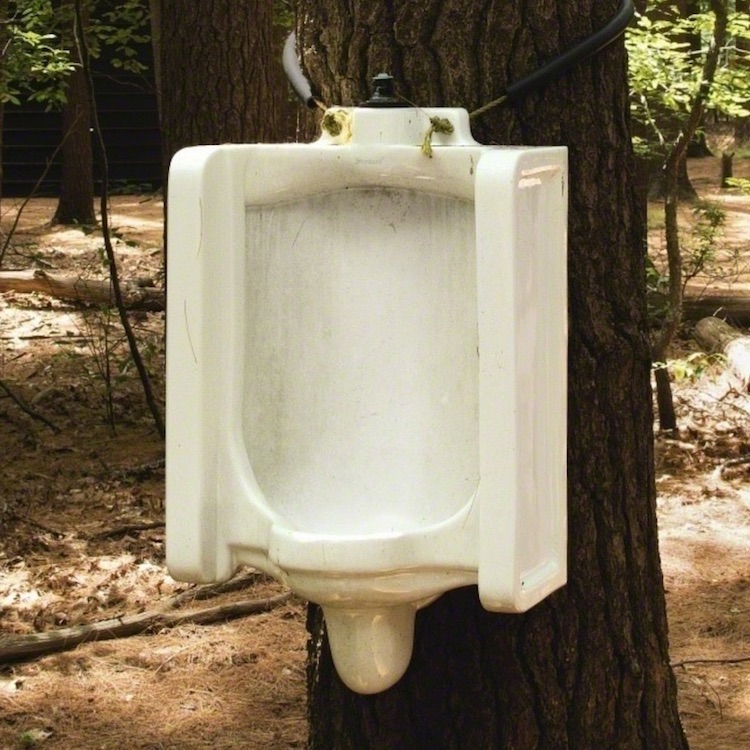Welcome to Spotted, our list of our top ceramic finds from the world of contemporary ceramics and contemporary ceramic art. In this edition we begin with two Marcel Duchamp-like potties and some fun, gory special effects thanks to ceramics.
David Hammons: Toilet Tree
If a tree falls in the woods, does anyone hear it. They may hear this one, as this tree is equipped with a urinal. Toilet Tree by multi-disciplinary artist David Hammons, who is known for his incisive sculptures, installations, performances, and body prints, can be attached to any tree one desires to piss on with its patentable rubber hanging apparatus. The artwork sold at a Sothebys’ auction for $170,000 (it had been estimated to be valued between $150,000 – $200,000).

David Hammons, Toilet Tree, 2004, ceramic urinal, rubber tube and plastic rope
urinal: 30 1/2 x 18 1/4 x 8 1/2 inches. Installation dimensions variable.

detail
Matthew Zivich: Empires & Enclaves

Making a splash as we wrap up the centennial of Marcel Duchamp’s Fountain, check out this glorious confetti urinal by artist Matthew Zivich at his exhibition Empires & Enclaves earlier this year at What Pipeline in Detroit (February 10 – March 25, 2017).
Watch a video of an artist talk with Zivich here.
Zivich (b. 1937, East Chicago, Indiana) is a Professor of Art at Saginaw Valley State University. He has been a frequent exhibitor and prize winner in regional exhibits including at the Work:Detroit and Work:Ann Arbor galleries, sponsored by the University of Michigan, and has been a winner of several U of M Alumni Show juried prizes including most recently one of the three top awards at the 2016 alumni show.

Be sure to check out our collection of essays in our new R. Mutt anthology.
Bloody Ceramics Help Hollywood

It may be too late for Halloween, but just in case Krampus visits your abode this holiday season, the American Ceramic Society has some science to ensure it’s a bloody one! Turns out, ceramics have helped Hollywood’s earliest horror film directors achieve the perfect consistency in their fake blood.
In particular, early horror film director Herschell Gordon Lewis—who was one of the first to put gore on the big screen and “set new standards for gore and violence in the early 1960s” with the creation of the genre of splatter films—used Kaopectate as a primary ingredient for his on-screen gore.
Kaopectate is an oral antidiarrheal medication that, when mixed with red food dye, apparently helped Lewis achieve the perfect blood-like consistency to drip and ooze in his 1963 film Blood Feast.
This video hails from the American Chemical Society, and shows just how they did it.
You can read more about how Kaolin helped movie director simulate blood here.
Stay tuned throughout the week as we continue to add to this list of our Spotted ceramic finds.
Do you love or loathe our selection of ceramic finds from the world of contemporary ceramic art and contemporary ceramics. Share your thoughts in the comments section below.

Add your valued opinion to this post.